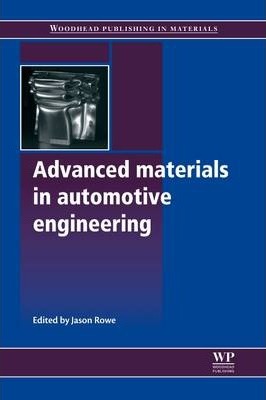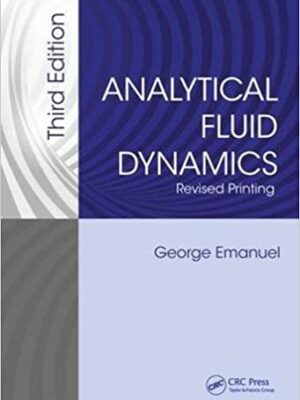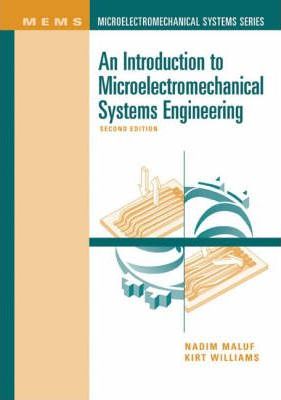Advanced Materials in Automotive Engineering
Original price was: ₹20,072.00.₹16,057.60Current price is: ₹16,057.60.
ISBN: 9781845695613
Author/Editor: Jason Rowe
Publisher: Woodhead Publishing
Year: 2012
1 in stock (can be backordered)
Description
The automotive industry is under constant pressure to design vehicles capable of meeting increasingly demanding challenges such as improved fuel economy, enhanced safety and effective emission control. Drawing on the knowledge of leading experts, Advanced materials in automotive engineering explores the development, potential and impact of using such materials.
Beginning with a comprehensive introduction to advanced materials for vehicle lightweighting and automotive applications, Advanced materials in automotive engineering goes on to consider nanostructured steel for automotive body structures, aluminium sheet and high pressure die-cast aluminium alloys for automotive applications, magnesium alloys for lightweight powertrains and automotive bodies, and polymer and composite moulding technologies. The final chapters then consider a range of design and manufacturing issues that need to be addressed when working with advanced materials, including the design of advanced automotive body structures and closures, technologies for reducing noise, vibration and harshness, joining systems, and the recycling of automotive materials.
With its distinguished editor and international team of contributors, Advanced materials in automotive engineering is an invaluable guide for all those involved in the engineering, design or analysis of motor vehicle bodies and components, as well as all students of automotive design and engineering.
Additional information
| Weight | 0.67 kg |
|---|
Product Properties
| Year of Publication | 2012 |
|---|---|
| Table of Contents | Contributor contact details Chapter 1: Introduction: advanced materials and vehicle lightweighting Chapter 2: Advanced materials for automotive applications: an overview Abstract: 2.1 Introduction 2.2 Steels 2.3 Light alloys 2.4 Stainless steels 2.5 Cast iron 2.6 Composite materials 2.7 Glazing materials 2.8 Conclusions Chapter 3: Advanced metal-forming technologies for automotive applications Abstract: 3.1 Formability 3.2 Forming technology 3.3 Modelling 3.4 Economic considerations Chapter 4: Nanostructured steel for automotive body structures Abstract: 4.1 Introduction 4.2 Potential demand for nanostructured steels for automotive body structures 4.3 Fabricating nanostructured low-C steel sheets 4.4 Improving elongation in nanostructured steel sheets 4.5 Crash-worthiness of nanostructured steel sheets 4.6 Conclusions 4.8 Appendix Chapter 5: Aluminium sheet for automotive applications Abstract: 5.1 Introduction 5.2 Sheet alloys for outer applications 5.3 Sheet alloys for inner closure panels and structural applications 5.4 Fusion alloys 5.5 Surface treatment of the aluminium strip 5.6 Future trends Chapter 6: High-pressure die-cast (HPDC) aluminium alloys for automotive applications Abstract: 6.1 Introduction 6.2 AlSi heat-treatable alloys - Silafont (R)-36 6.3 AIMg non heat-treatable alloys - Magsimal (R)-59 6.4 AlSi non heat-treatable alloys - Castasil (R)-37 6.5 Automotive trends in die-casting Chapter 7: Magnesium alloys for lightweight powertrains and automotive bodies Abstract: 7.1 Introduction 7.2 Cast magnesium 7.3 Sheet magnesium 7.4 Extruded magnesium 7.5 Future trends 7.6 Acknowledgments Chapter 8: Polymer and composite moulding technologies for automotive applications Abstract: 8.1 Introduction 8.2 Polymeric materials used in the automotive industry 8.3 Composite processing procedures 8.4 Fields of application for fibre-reinforced polymer composites (FRPCs) 8.5 Further challenges for composites in the automotive industry Chapter 9: Advanced automotive body structures and closures Abstract: 9.1 Current technology, applications and vehicles 9.2 Key factors driving change and improvements 9.3 Trends in material usage 9.4 Latest technologies Chapter 10: Advanced materials and technologies for reducing noise, vibration and harshness (NVH) in automobiles Abstract: 10.1 Introduction 10.2 General noise, vibration and harshness (NVH) abatement measures 10.3 Selected concepts for noise, vibration and harshness (NVH) control 10.4 Applications 10.5 Conclusions 10.6 Acknowledgements Chapter 11: Recycling of materials in automotive engineering Abstract: 11.1 End of life vehicles (ELVs) 11.2 Reuse, recycle or recover? 11.3 Environmental impact assessment tools 11.4 Case study - the WorldF3rst racing car 11.5 Conclusions Chapter 12: Joining technologies for automotive components Abstract: 12.1 Introduction 12.2 Types of advanced structural materials in cars 12.3 Factors affecting the selection of joining methods 12.4 Joint design and joint surfaces 12.5 Laser beam welding (LBW) and brazing/soldering 12.6 Adhesive bonding 12.7 Mechanical joints 12.8 Hybrid joining methods 12.9 The effect of volume on joining technology 12.10 Future trend |
| Author | Jason Rowe |
| ISBN/ISSN | 9781845695613 |
| Binding | Hardback |
| Edition | 1 |
| Publisher | Woodhead Publishing |
You must be logged in to post a review.






Reviews
There are no reviews yet.